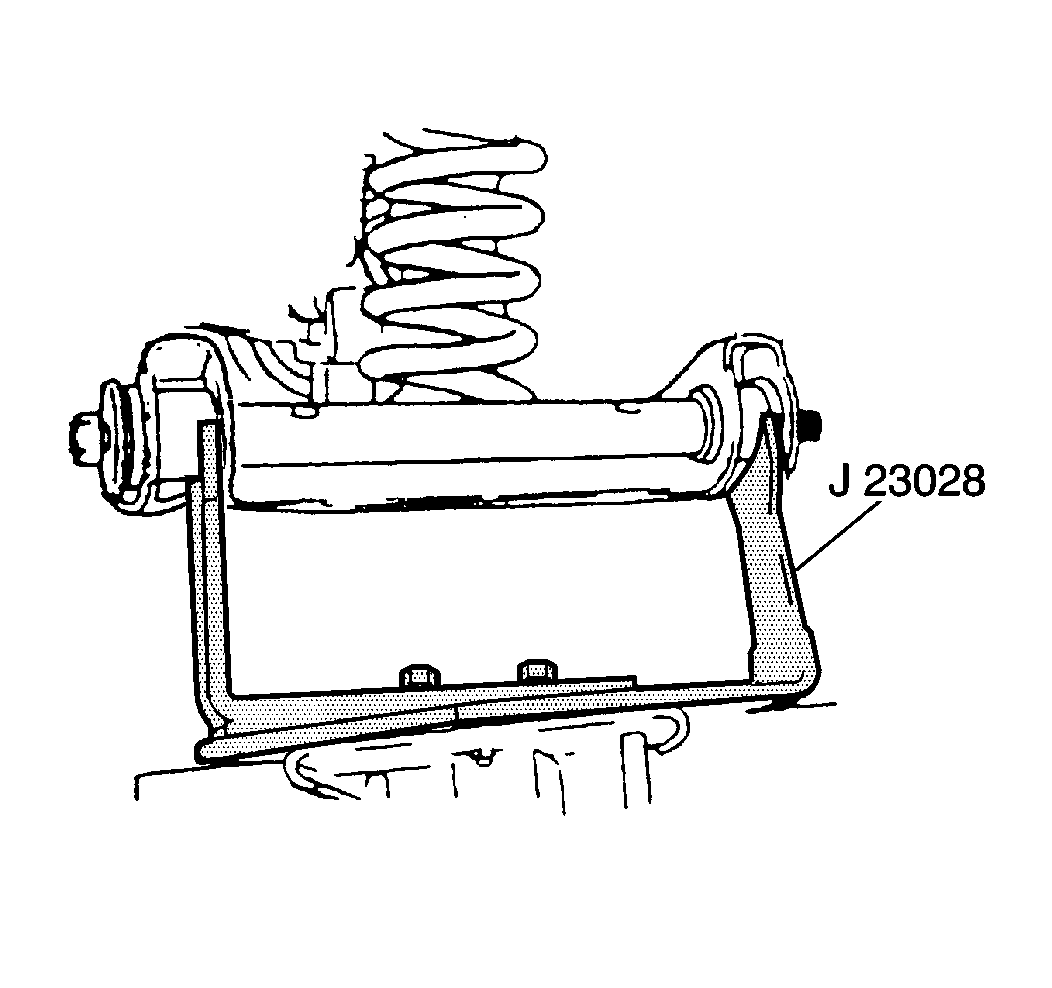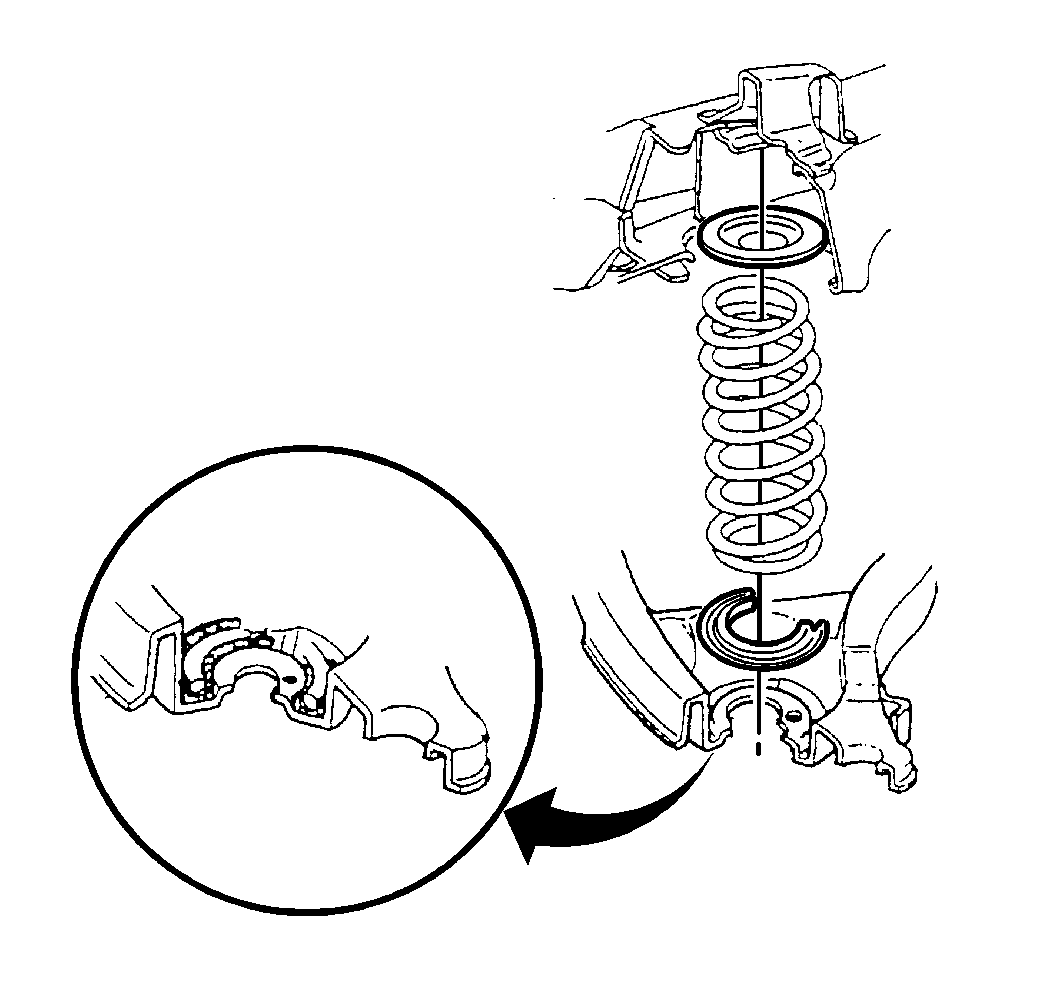Removal Procedure
Tools Required
J 23028-A Coil Spring
Remover and Installer
- Raise the vehicle. Refer to
Lifting and Jacking the Vehicle
in General Information.
The lower control arms must hang free.
- Remove the lower shock absorber mounting screws. Push the shock
absorber up through the lower control arm and into the coil spring.

Caution: Tool J 23028-01 should be secured to a suitable jack
or personal injury could result.
- Secure the J 23028-A
onto
a jack. Position the J 23028-A
so the tool cradles the inner bushings.
- Remove the stabilizer shaft linkage from the lower control arm.
Refer to
Stabilizer Shaft Replacement
.
Important: Install a chain around the coil spring and through the lower control
arm for safety.
- Raise the jack, under the J 23028-A
in order to relieve tension from the lower control arm
bolts.
- Remove the lower control arm bolts and the nuts. Remove the rear
bolt and the rear nut first.
- Lower the jack that is under the J 23028-A
.
Important: Do not apply force on the lower control arm or the lower ball joint
in order to remove the coil spring. Proper maneuvering of the spring will
allow for easy removal.
- After all compression is removed from the spring, remove the safety
chain and the coil spring.
Installation Procedure

- Install the coil spring
and the insulator onto the lower control arm.
| • | The insulators must be in place on the top and bottom of the coil
spring. |
| • | Install the spring with the identification tape towards the lower
control arm. |
| • | Align the edge of the coil spring with the edge of the insulator.
Align the insulator and the drain hole. |
| • | The end of the lower spring coil must cover all or part of one
inspection drain hole. The other drain hole must be partially exposed or completely
uncovered. |
Caution: Tool J 23028-01 should be secured to a suitable jack
or personal injury could result.
- Install the lower control arm into position.
| • | Properly seat the coil spring into the upper control arm. |
| • | Position the lower control arm so that the bushings match up to
the proper holes in the frame. |
- Install the lower control arm bolts and nuts.
| • | Install the front bolt first, then the rear bolt. |
| • | Install the bolts in the proper direction. |
| • | Tighten the nuts, but do not torque. |
- Install the stabilizer shaft linkage to the lower control arm.
Refer to
Stabilizer Shaft Replacement
.
Notice: Use the correct fastener in the correct location. Replacement fasteners
must be the correct part number for that application. Fasteners requiring
replacement or fasteners requiring the use of thread locking compound or sealant
are identified in the service procedure. Do not use paints, lubricants, or
corrosion inhibitors on fasteners or fastener joint surfaces unless specified.
These coatings affect fastener torque and joint clamping force and may damage
the fastener. Use the correct tightening sequence and specifications when
installing fasteners in order to avoid damage to parts and systems.
- Install the shock
absorber lower mounting screws. Pull the shock absorber down through the coil
spring and align with the holes in the lower control arm.
Tighten
Tighten the screws to 25 N·m (18 lb ft).
- Lower the vehicle.
Tighten
- Tighten the lower control arm front nut to 90 N·m
(66 lb ft), with the vehicle weight on the wheels.
- Tighten the lower control arm rear nut to 90 N·m
(66 lb ft), with the vehicle weight on the wheels.
- Check the front wheel alignment. Refer to
Wheel Alignment Measurement
in Wheel Alignment.


